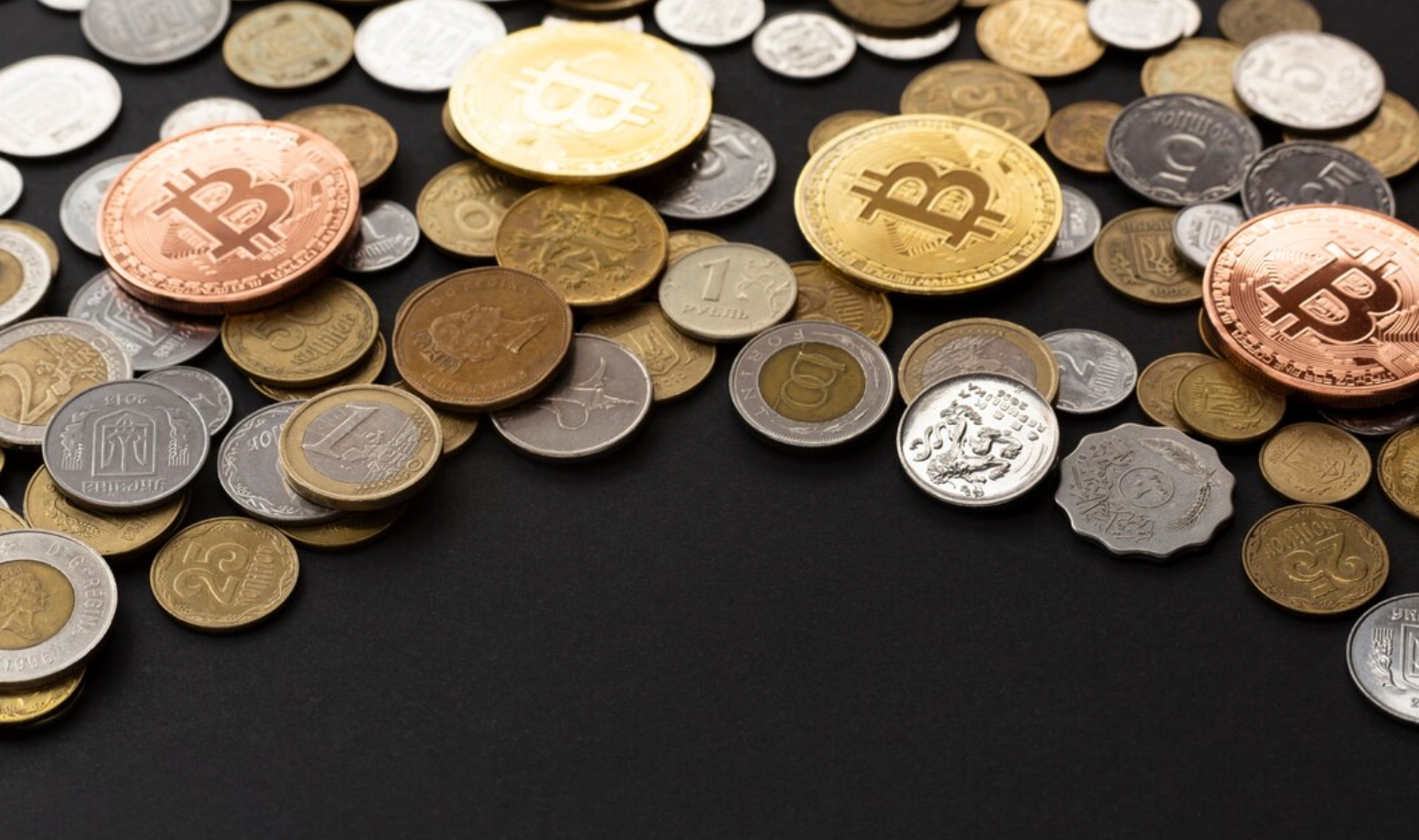In this day and age, one of the most common ways to generate passive income is through the mining of cryptocurrencies. Mining is the process of solving complicated mathematical equations and validating transactions on a decentralized blockchain network by employing specialized hardware and software. The miners are paid for their work with new currencies, and these coins can be sold on multiple exchanges to make a profit. Mining, on the other hand, maybe a process that is both costly and time-consuming, and the profitability of mining operations can fluctuate dramatically depending on a variety of factors. In this piece, we will investigate the economics of mining cryptocurrencies, including topics such as expenses, revenues, and developments in the market.
An Overview of the Mining Process for Cryptocurrencies
Mining is the process of validating transactions on a blockchain network using computer hardware. Mining is also known as “cryptocurrency mining.” To accomplish this, difficult mathematical equations need to be solved, and the accuracy of the transactions needs to be checked. Miners are paid for their work with new coins, which can then be sold on exchanges or held for future appreciation if they choose to hold onto them.
The process of mining can be carried out with a wide number of distinct pieces of hardware, including graphics processing units (GPUs), application-specific integrated circuits (ASICs), and field-programmable gate arrays (FPGAs) (FPGAs). The particular cryptocurrency that is being mined, in addition to the miner’s financial situation and level of technical expertise, will determine the type of hardware that is employed.
Expenses Incurred While Mining Cryptocurrency
The mining process can be pretty pricey due to the various costs involved, including hardware, power, and cooling. The cost of hardware can vary significantly depending on the type of equipment that is utilized, with ASICs being the most expensive but also the most effective equipment. Mining consumes a substantial quantity of power continually, making the cost of electricity another key component of the equation. Costs associated with cooling are also significant, given that mining hardware can produce a significant amount of heat and needs to be maintained at a consistent temperature for it to function properly.
In addition to these expenditures, miners are also responsible for the expenses associated with maintenance and repairs. This is because mining hardware is prone to malfunction and may require routine care.
Earnings Generated by Mining Cryptocurrencies
The amount of revenue that can be earned through mining will be contingent on several things, such as the price of the cryptocurrency that is being mined, how challenging the mining process is, and how much competition there is in the mining market. When there is a stronger demand for the coin, miners can generate a greater amount of revenue per block. In a similar vein, a miner will be able to solve blocks and collect rewards more quickly in proportion to the level of difficulty of the mining process.
Yet, rivalry in the mining industry can have a substantial influence on revenue, as an increase in the number of miners operating in a given market can result in increased difficulty and a reduction in profitability. However, the block rewards for many cryptocurrencies are predetermined and gradually diminish over time, which might further reduce the possibility of profitability.
Trends in the Market for Mining Cryptocurrencies
The market for mining cryptocurrencies is subject to several factors, each of which has the potential to influence profitability and competitiveness. For instance, the release of brand-new ASICs has the potential to boost mining efficiency significantly, but it also has the potential to increase mining competition and difficulty. Similarly, alterations to the cryptocurrency market, such as alterations in regulatory changes or shifts in investor attitude, can have a substantial impact on the price of coins and the profitability of mining. These alterations can take the form of new regulations or shifts in investor mood.
In recent years, the market for mining cryptocurrencies has also witnessed a move towards mining pools. Mining pools enable individual miners to combine their resources and collaborate to solve blocks and collect rewards. This may increase the likelihood of receiving rewards, but it also necessitates the distribution of revenues among the participants in the pool.
FAQs:
What is cryptocurrency mining?
To validate transactions on a blockchain network and add new blocks to the network, miners need sophisticated computing devices to solve complicated mathematical algorithms. This is a crucial step in keeping the cryptocurrency network up since it allows miners to be compensated in newly created cryptocurrency coins. Mining cryptocurrencies is normally done with dedicated hardware and software and can be lucrative for individuals with access to the requisite resources and technical know-how.
How much does it cost to start mining cryptocurrency?
The cost of starting a cryptocurrency mining operation can vary depending on a number of factors, including the type of cryptocurrency being mined, the equipment being used, and the cost of electricity in the area where the mining is taking place.
In general, the cost of the hardware needed for mining can range from a few hundred dollars for a basic setup to several thousand dollars for a more powerful rig. Additionally, there are ongoing costs associated with mining, such as the cost of electricity, which can be significant depending on the amount of power being consumed by the mining equipment.
It’s important to consider all of these costs when starting a mining operation, as well as the potential returns on investment, in order to determine whether or not mining is a profitable venture for you.
Can you mine cryptocurrency with a regular computer?
In the early days of cryptocurrency mining, it was possible to mine some cryptocurrencies using a regular computer or laptop. However, as the popularity and complexity of mining have increased, so has the level of hardware required to be able to mine effectively.
Today, most cryptocurrencies require specialized hardware called ASICs (Application-Specific Integrated Circuits) or GPUs (Graphics Processing Units) to mine effectively. These specialized devices are designed specifically for mining and are much more efficient than regular computer processors at performing the complex mathematical calculations required for mining.
While it may still be possible to mine some less popular cryptocurrencies using a regular computer, it is generally not a profitable or efficient way to mine cryptocurrency. If you are serious about mining, you will need to invest in specialized hardware designed for this purpose.
How much profit can you make from mining cryptocurrency?
The profit potential of cryptocurrency mining varies depending on a number of factors, including the type of cryptocurrency being mined, the cost of hardware and electricity, and the difficulty level of the mining process.
In the early days of cryptocurrency, it was possible for individuals to make a significant profit from mining with relatively low-cost hardware. However, as the popularity and complexity of cryptocurrency mining have increased, so has the level of competition and the amount of specialized hardware required to mine effectively.
Today, the profitability of cryptocurrency mining can be highly variable and dependent on many factors. In some cases, the costs associated with mining may outweigh the potential rewards. It’s important to carefully consider all of the costs and potential profits associated with mining before investing in hardware and starting a mining operation.
Overall, it is difficult to estimate how much profit one can make from mining cryptocurrency, as it depends on many factors, including the current price of the cryptocurrency being mined, the cost of electricity and equipment, and the difficulty level of the mining process.
Is mining cryptocurrency still profitable?
The profitability of mining cryptocurrency varies greatly depending on a number of factors, including the specific cryptocurrency being mined, the cost of hardware and electricity, and the current market conditions for that cryptocurrency.
In the early days of cryptocurrency, mining was much more profitable than it is today, as the mining difficulty was much lower and the price of many cryptocurrencies was much higher. However, as the popularity and complexity of mining has increased, so has the level of competition and the cost of hardware and electricity required to mine effectively.
Today, mining profitability can be highly variable and dependent on many factors. In some cases, the costs associated with mining may outweigh the potential rewards. It’s important to carefully consider all of the costs and potential profits associated with mining before investing in hardware and starting a mining operation.
Despite the challenges, some individuals and companies continue to find mining to be a profitable activity, particularly for newer cryptocurrencies or in areas with low electricity costs. However, it’s important to research and consider all of the relevant factors before starting a mining operation.
Conclusion
In conclusion, cryptocurrency mining can be a potentially lucrative activity, but it requires careful consideration and planning to ensure profitability. The cost of hardware, electricity and competition can greatly impact the profitability of mining, and the rewards for mining can vary greatly depending on the cryptocurrency being mined and the current market conditions. Despite the challenges, some individuals and companies continue to find success in mining cryptocurrency, and with careful research and planning, it is possible to succeed in this field. However, it is important to approach cryptocurrency mining with a clear understanding of the costs and potential rewards and to carefully consider all of the relevant factors before investing in hardware and starting a mining operation.





